Learn how to flip watches for profit with expert tips, tricks, and strategies to turn your passion into a profitable side hustle or full-time business!
If you're looking to make some cash in today's gig economy, you might want to consider learning the art of flipping items for profit.
In the watch world, there’s a long history of reselling, also known as the ‘gray market.’ It can rake it a ton of potential cash, but the question is, where do you get started?
At first, it might seem like it takes a lot of cash and expertise, but that's not really the case. The biggest challenge is finding low-priced high-end watches with a high resale potential. After all, watch flipping is only profitable if you can connect with distributors and dealers in your area.
Thankfully, that’s where we come in.
In this guide, we take a deep dive into everything there is to know about flipping watches, including the kind of money you can expect to make, and how to look out for the best pieces.
To find out more, keep reading.
What does flipping watches really mean?
Before we dive straight into our guide, first of all, let’s take a closer look at what flipping watches really means.
‘Flipping’ refers to acquiring an item and then selling it for a profit. Due to the free market, almost anyone can become a flipper and make a side hustle or a living from finding items to flip profitably.
Watch flipping involves purchasing watches, typically luxury or limited-edition timepieces, at retail prices or below and then selling them at a higher price. This can be done through a variety of channels, including online marketplaces, watch forums, or auction sites.
Flippers will usually target high-end models or well known brands, such as Rolex, Patek Philippe, or Audemars Piguet, with the ultimate goal being capitalizing on the high demand or scarcity of the pieces by reselling at premium.
What’s the difference between flipping and reselling?
Flipping and reselling are sometimes used interchangeably, but there is a subtle and important nuance between the two. While all reselling can be categorized as flipping, not all flipping is reselling.
Flipping includes getting items for free and trading, making it more diverse than reselling. It also typically refers to buying an item with the intention of quickly repelling it for a profit, all within a short time frame.
Reselling, on the other hand, can involve both long-term and short-term selling. Reselling usually means buying items and selling them at a profit with a more sustained or ongoing approach.
Flipping and reselling are both prime examples of retail arbitrage, which you can find out more about by checking out our retail arbitrage guide that explains everything you need to know.
Is flipping watches profitable?
Now, let’s examine just how profitable watch flipping is. Reselling watches can definitely bring in some good cash, but it can also lead to quick losses. Just like with other resale items, your success in flipping watches really depends on snagging the right pieces at the right time.
The more difficult it is to acquire a particular watch at retail price (because of waiting lists or limited releases), the higher the potential resale price. Watches that are more difficult to find or are part of limited runs tend to appreciate more quickly, ultimately leading to higher profit margins.
That’s why doing appropriate research and gaining a deeper understanding of the market is so crucial for flipping success. You need to know which models are in demand, which are likely to appreciate, and understand how to navigate the secondary market (e.g., watch forums, online marketplaces), all of which can significantly impact your profitability.
Typical profit margins can range from 10% to 100% or more, depending on the rarity of the watch and how well you’ve sourced it. You might even find yourself making several thousand dollars for a single flip. For example, a Rolex that retails for $12,000 may be flipped for $18,000 or even higher if the model is in high demand.
Finally, the amount of profit you generate from flipping watches also depends on the time invested. It’s not considered a ‘get rich quick’ venture, and can take a considerable amount of time to secure the right products.
Watch flipping pros and cons
Before we jump straight into our guide, let’s take a closer look at some of the pros and cons of the watch-flipping game. This will help you make an informed decision on whether or not it’s the right business venture for you.
Pros
✅ Lucrative: Watch flipping can be incredibly lucrative, as we’ve just covered above. Watches, especially luxury and vintage models, often appreciate in value over time. So, if you have a keen eye for collectibles, your profit margins on resale could be significant.
✅ Quick turnaround: Depending on the market conditions, watches can be flipped incredibly quickly, especially if you have limited edition pieces in your collection.
✅ Flexible: With watch flipping, you work according to your own schedule, which is an attractive prospect to many. You can choose when and where you work, as the job doesn’t require a fixed 9-to-5 schedule.
✅ Scaleable: Watch flipping is also a very scalable business model. You can start small with very minimal overhead costs, and it’s easy to grow as you gain experience.
✅ Dynamic industry: It’s an incredibly exciting and dynamic industry for people who are already enthusiastic about watches. The variety of watch brands, styles, and markets keeps the business exciting. Plus, you get to network with a hoard of other passionate people working in the same industry.
Cons:
❌ Potential for scams: Unfortunately, the market is full of counterfeit and replica watches. This is why it’s so important to know how to spot fake watches to avoid buying them and losing money (more on this later).
❌ Competitive: Watch flipping can be an incredibly competitive market, with thousands of other resellers, dealers, and collectors looking for the same pieces. So, though you can work according to your own schedule, you will need to dedicate a significant amount of time and energy in sourcing your items.
❌ Time-consuming: This brings us to our next point. Watch flipping is time-consuming, with a great deal of time spent on researching, sourcing, and assessing market trends. In addition to this, listing items on online marketplaces such as eBay can be tedious work, as you’ll need to create accurate descriptions, take high-quality photos, and promote the watches. Responding to potential buyers and managing inventory also adds to the workload.
How to flip watches: A step-by-step guide
Now that we’ve covered the basics, it’s time to jump into our guide. Below, you’ll find a full tutorial on the art of flipping watches.
1. Researching the watch market
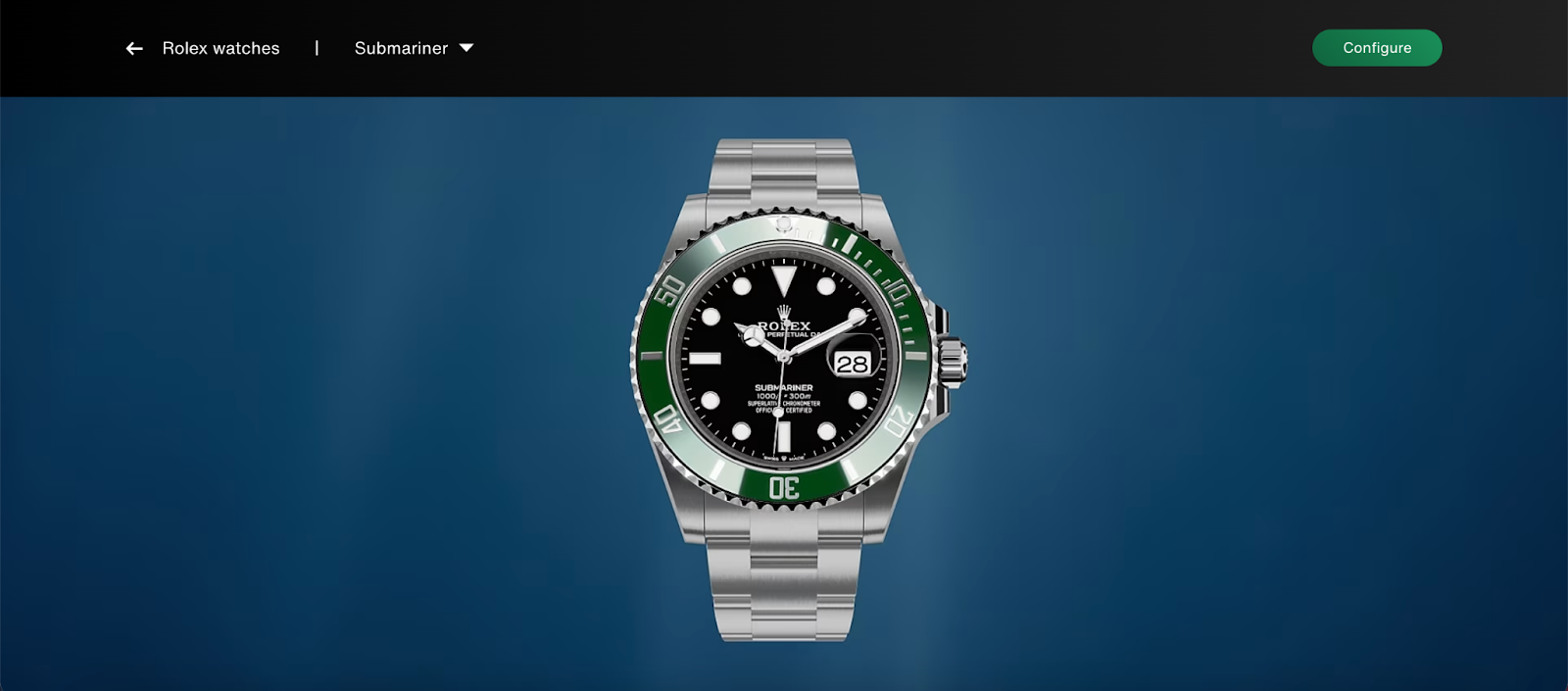
First and foremost, you’ll need to familiarize yourself with some of the most popular watch brands you can flip for profit. Make sure to focus on popular brands like Rolex, Omega, and Patek Philippe that hold or increase in value.
Rolex has an average annual appreciation rate of 5% to 10% over the past decade, so this is definitely a good place to start. In addition to this, certain models within these brands are considered more desirable than others. For example, some popular Rolex models to keep an eye out for include:
- Rolex Submariner
- Rolex Daytona
- Patek Philippe Nautilus
- Audemars Piguet Royal Oak
- Omega Speedmaster
- Tudor Black Bay
2. Learn watch valuation
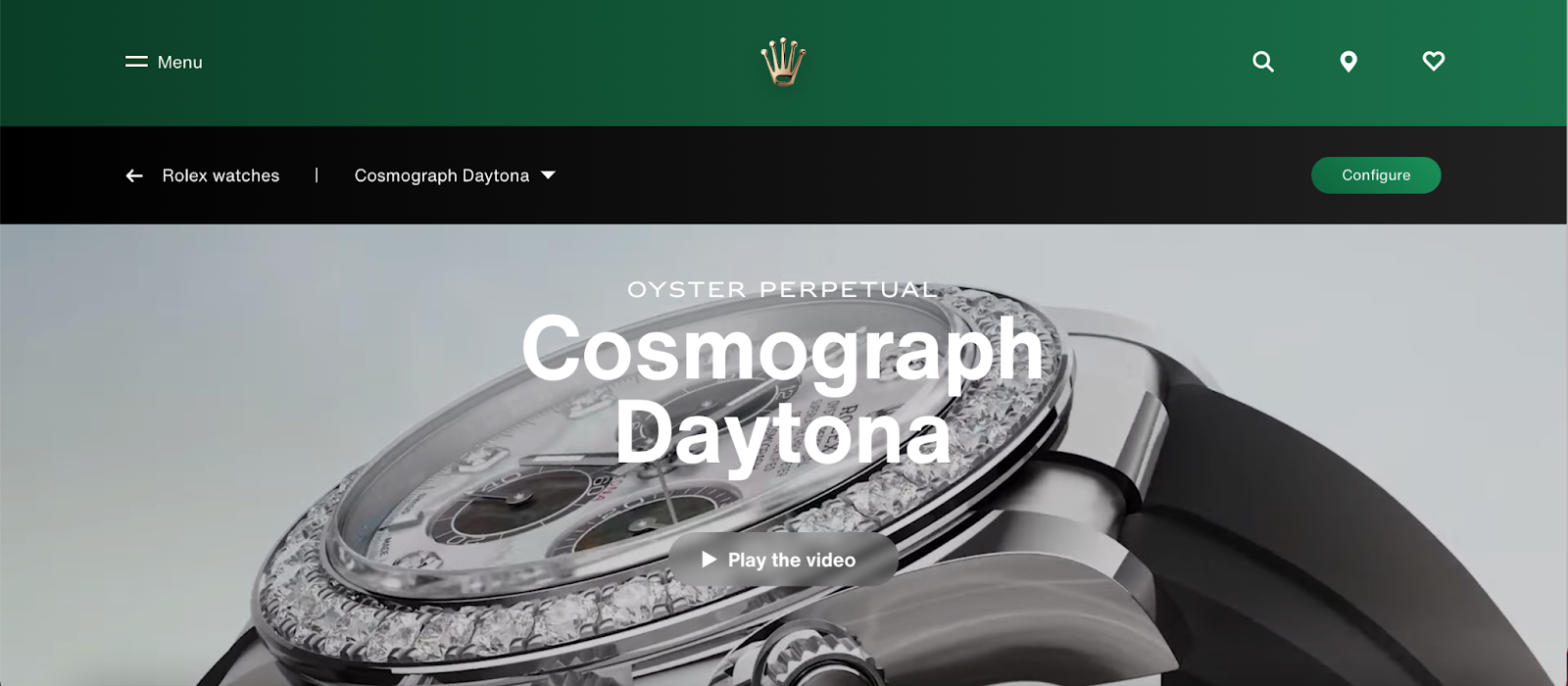
Next up, you’ll need to hone your watch valuation skills. As we mentioned above, some models are considered more valuable than others and consistently hold their value or increase over time.
But it doesn’t stop there. There are also limited edition or rare variants that hold higher value than others because of unique features or heritage.
For example, the Rolex Daytona is one of the most celebrated pieces by enthusiasts and pursued by collectors. Named after one of America’s most famous race tracks, it’s no surprise that this watch was originally designed for race car drivers!
The Daytona has become synonymous with Rolex chronographs; but Rolex have been manufacturing watches with chronograph complications for several decades before the Daytona became the iconic piece it is today. Its history dates back to the 1930s, but it was not until 1963, with the introduction of the Rolex 6239, that a name was given to the chronograph line of watches.
Before, these watches were known simply as ‘Cosmographs’ - a name that still remains on the Daytona dials that are manufactured today. Specially engraved Daytona watches are awarded to the winning drivers of the prestigious annual Daytona 24-hour race.
Knowing and understanding details of a watch’s history in this way will help you spot key differences that can affect value.
Other things you’ll need to identify in your research include:
- Complications: Complications are features displayed by a watch that go beyond simple time telling. These include chronographs, moon phases, perpetual calendars, or tourbillons. Watches that have more complications tend to be of more value.
- Materials: The materials used to make a watch (including the dial) will have a significant impact on its price, e.g. 8k gold, platinum, titanium, ceramic etc…
- Condition: The condition a watch is in will also impact a piece’s market value, so it’s important to learn the appropriate terminology, e.g. ‘mint condition,’ ‘NOS (New Old Stock),’ or ‘vintage with patina.’
- Movement types: It’s essential to know the difference between automatic, manual, and quartz movements. This is because automatic and manual movements from high-end brands are typically valued higher than quartz movements.
We’d recommend using Chrono24, WatchBox, or eBay to check the current market prices of the watches you’re planning to buy. Chrono24 in particular lists over 500,000 watches from more than 3,000 dealers worldwide. With this data, you’ll get a comprehensive view of the global watch market.
3. Familiarize yourself with market cycles
Next up, you’ll need to learn all about market cycles. If you’ve never heard of this term, a market cycle essentially means the price fluctuation of a watch determined by various factors, including demand, availability, and broader economic trends.
Some of the different things that can impact a watches’ market cycle include:
- Releases and discontinuations: Both new releases and discontinuations of models can affect the price of certain watch models.
- Market conditions: Watch prices are ultimately tied to broader economic trends. So, for example, when the market is experiencing a boom, the demand for luxury goods rises, boosting watch prices.
- Trends: Trends and shifts in fashion also alter the valuation of a watch. For example, a model may be highly in demand for a few years but could gradually decrease in interest as tastes shift.
- Limited edition models: Limited-edition watches or ones that are difficult to find will usually maintain or increase in value. This is true for Rolex’s Ceramic Daytona we mentioned earlier, which has prices climb over time due to high demand and limited availability.
- Auction house sales: It’s well known that auctions drive up the value of rare and vintage watches, especially when the items on sale fetch high prices or receive media attention.
Essentially, timing is key when it comes to flipping watches. It’s always a good idea to buy early in the growth phase of a hot model before the prices increase. Furthermore, it’s also important to sell when a model reaches its peak value in the growth or maturity phase.
4. Find the best deals
You’ll need to practice a great deal of patience in order to secure the best prices, searching eBay for auctions and buy-it-now deals. You’ll likely need to dedicate at least a few hours per day hunting down different pieces online and comparing costs.
It’s a good idea to join watch forums like Watchuseek or Reddit's r/watches, and search websites like Chrono24 and Bob’s Watches to help keep an eye out for in-demand watches
Join forums and communities where watch enthusiasts participate will not only help you find better deals, but also hone your flipping knowledge. Whop is home to hundreds of reselling communities, including Vookum Verified, where you learn how to flip watches.
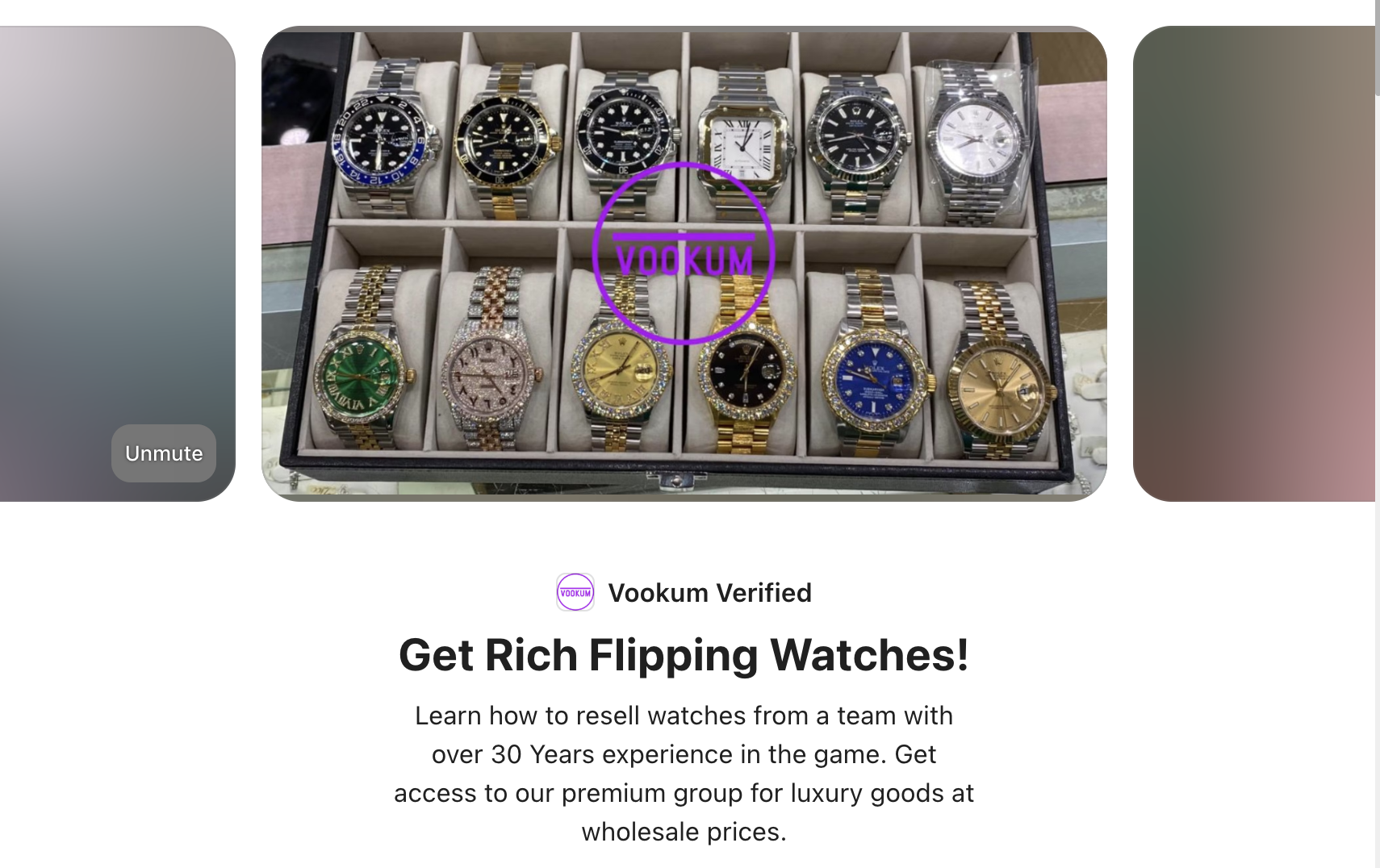
You can also visit local watch shops and pawn shops to help you find below-market value and unique pieces. With private sellers, there’s often room for negotiation. Make an offer based on your research and market trends. Some sellers are willing to accept a lower price for a quick sale.
💡 Top tip: Grey market dealers often sell authentic watches without an official manufacturer's warranty. These dealers typically offer watches at a bargain compared to retail prices, making them a great source for buying watches. But, bear in mind that it’s important to research the seller’s reputation and return policies.
5. Learn to negotiate
Negotiation is one of the most important skills you’ll need to practice in the world of watch flipping. Here are some important things to remember when trying to drive down prices:
- Understand value: One of the most important tools you’ll need to negotiate properly is knowledge. You need to have a sound understanding of the current market value of the watch you're negotiating for. This is why resources like Chrono24, WatchBox, and eBay are so valuable in these instances.
- Active listening: Make sure you’re listening to the seller's needs, concerns, and motivations. This will give you a better understanding of their perspective and help you find common ground.
- Motivations: Furthermore, you’ll need to examine the seller’s motivations. Are they looking to offload the watch quickly? Or are they testing the market? If the seller needs to make a quick sale, this will give you more room for negotiation.
- Rapport: Building rapport with the seller is another key tactic for successful negotiation. Make sure to approach negotiations in a respectful, calm, and affable manner. If you come across as rude or aggressive, people are less likely to negotiate with you.
- Timing: Timing is an important factor in negotiation. Never rush into a deal. Usually, waiting and letting the seller think over your offer can encourage them to reconsider and ultimately offer a better price.
- Managing emotions: You need to stay cool and collected during negotiations, taking care not to come across as too eager or impatient, even when you’re faced with difficult situations.
Before entering any type of negotiation, it’s important to decide on a maximum price you’re willing to pay for the watch. This will prevent you from getting carried away, and ensure you don’t overpay, leaving plenty of room to make a profit when you sell.
💡 Top tip: Using comparisons to strengthen your offer is an incredibly useful tactic for successful negotiation. This is where your research skills come into play. Find other watches that have recently sold in similar condition and at lower prices. You can then point these out to the seller.
For example: ‘I’ve seen similar watches in this condition listed for $X on eBay,’ or ‘I know another seller offered a similar watch for ($).’ This shows the seller you're aware of market prices, making it difficult for them to push an inflated price.
6. Evaluate your watches
Before you buy a piece, you need to evaluate it properly. First and foremost, make sure the watches you purchase come with original paperwork and boxes. You can also use software like WatchCSA to authenticate the watch.
You’ll also need to assess the watch itself. To do this, you should check the mechanism is working properly, and that the case, crystal, and strap/bracelet are all in good condition.
Finally, make sure the dial is in good condition. Look for any signs of discoloration, fading, or staining on the dial. These kinds of defects can be caused by exposure to sunlight, moisture, or improper storage.
It’s always best to buy from sellers who document their watches' service history. You might be surprised to find a well-documented service history can increase a watch's value by up to 20%. On the other hand, something as minor as a scratch on the crystal can reduce the value by 5-10%.
7. Restoration
If you’re flipping vintage watches or watches with cosmetic or functional wear, restoration is an important skill to ensure the product is in peak condition, significantly increasing its value. With restoration, you can ultimately sell the product for a higher price, however, this requires skill, physical tools, and plenty of knowledge about watchmaking.
It’s always best to use original parts if you need to replace certain portions of the watch. Non-original parts reduce the watch’s value by 50% or more.
Some common areas of a watch that experience wear and tear over time include:
- Straps: If the watch has a metal bracelet, make sure to check for stretching, missing links, or damaged clasps. Alternatively, if the watch has a leather strap, check for cracking, fading, or wear.
- Functionality: Make sure to check the watch to ensure its timekeeping abilities are running smoothly. This could mean testing the power reserve to see how long the watch runs after being wound, or testing the movement to check it’s running properly. Some watches might need lubing or adjusting to work at full efficiency.
- Corrosion: One of the most important things to check your watch for is signs of corrosion, particularly for older models. You might need to replace the bezel or case back if it shows significant signs of corrosion.
- Dents: Look out for small dents on the surface of the watch's exterior. Sorting this out usually requires minimal repair work. Small dents can usually be removed with a case press or dent removal tools. Be gentle to avoid making further or more severe indentations.
- Repainting: Sometimes, you might need to repaint the dial or markers (this is usually true for vintage watches). Normally, you wouldn’t undertake this kind of repair work yourself, as it’s incredibly delicate work. Many Watchmakers specialize in restoring the dial to its original look, including re-luming the markers if needed.
It’s good to finish off the job by polishing the watch to make it look new. However, be careful not to over-polish because it reduces the fine details, potentially reducing the value by 30%.
8. Photograph your watches
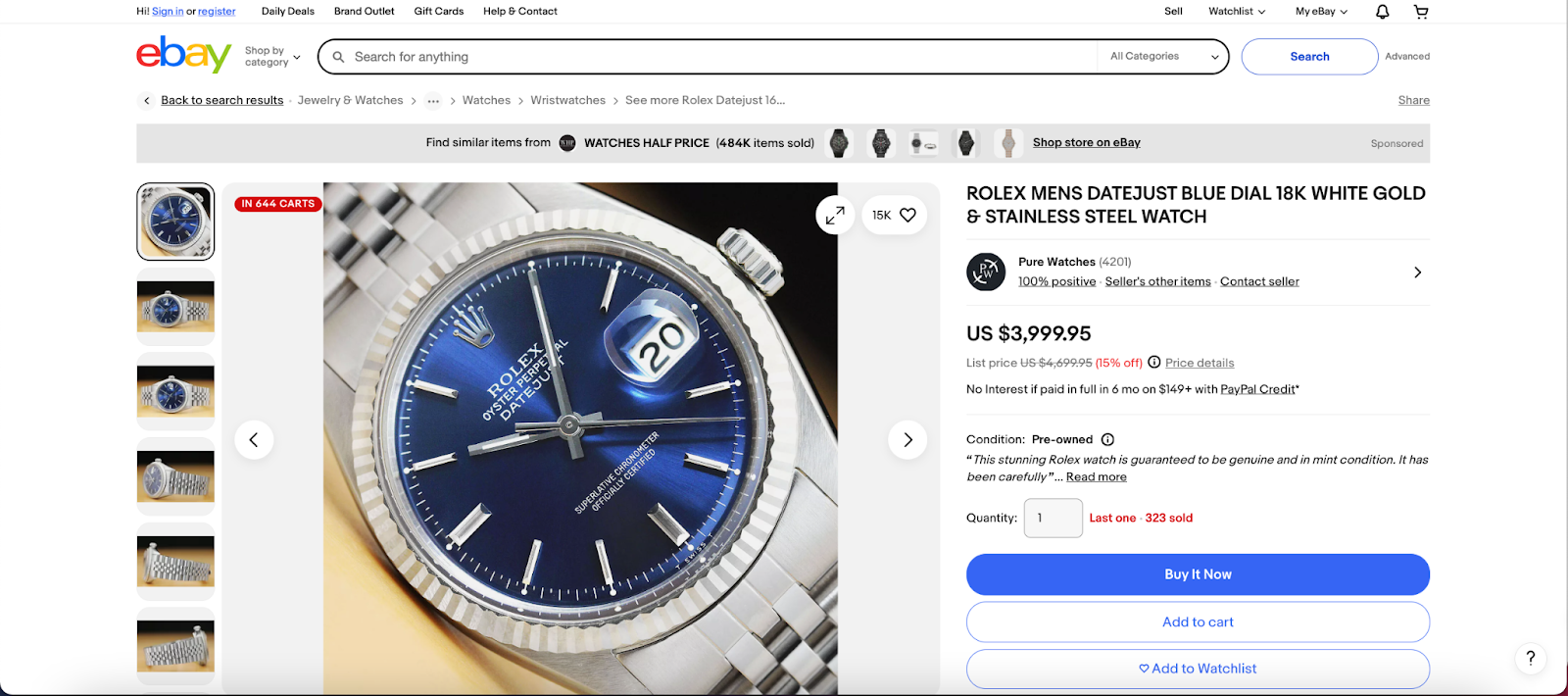
Next up, you’ll need to prepare to sell your watches by taking images of them using a camera. This is a skill in and of itself. Make sure to take high-quality photos and write detailed descriptions in a professional tone. You’ll need to include the history, condition, and service records of the watch in your product description. Detailed descriptions will help build trust among buyers as well as increase the product’s final selling price.
To take clear, professional images of your watches, make sure to apply the following:
- Camera: First up, you’ll need a camera. Though a smartphone camera is often enough for casual flipping, it’s best to invest in the proper equipment if you’re serious about flipping as a proper business venture. A DSLR or mirrorless camera with macro lens options will give you more control over the quality of the images.
- Lighting: You need to ensure you’re using the best lighting possible to photograph your watches. Natural light is always considered the best option for product photos, as it captures colors and textures accurately, making sure images are true to life. If natural lighting isn’t possible, you can use softbox or LED lighting instead, using reflectors to minimize shadowing.
- Backdrop: Your products’ backdrop is incredibly important. It will need to be completely neutral and distraction-free, focusing the customer’s attention to the product itself. A plain white, black, or dark surface is a popular option, or you can use a fabric backdrop to add more texture.
- Angle: Make sure you take images of the watch from multiple angles, so customers get a good feel of what it looks like in real life. It’s a good idea to capture the watch at a 3/4 angle (around 45 degrees), to show the dial, bezel, and lugs clearly. You can combine this with some close-up shots showing some of the products’ most important features, including the brand logo and hour markers.
- Editing: Keep editing to a minimum, as you want to give an accurate and honest representation of the watch that hasn’t been distorted in any way. Some simple things you can do to enhance the photo include sharpening the image, cropping out any unnecessary background, and adjusting the brightness and contrast to make sure it’s not overexposed.
9. Register your business to become an authorized dealer
Registering your business as a watch flipper (or watch-flipping business) is a crucial step to ensure you're operating legally, protect yourself from personal liability, and potentially benefit from certain tax advantages. This is also one of the requirements you need to comply with before you can have your partnership with the watch manufacturer.
Before registering your business, you’ll need to decide on your business’s legal structure. Some options include:
- Sole proprietorship: This is the most common business structure for those entering the flipping game. This structure recognizes you as the business, and holds you legally liable for any debts or obligations. Profits will be reported on your personal taxes.
- Limited Liability Company (LLC): This is another preferred choice for small businesses, and offers liability protection (where your personal assets are separate from the business). It also gives you flexibility in terms of tax, and is super simple to set up.
- Partnership: If you’re planning on starting your business as a partnership with one or more people, then a partnership business structure allows multiple people to share in the profits and responsibilities.
- Corporation: This is one of the more complex setups and is typically reserved for larger businesses. It grants liability protection and certain tax benefits, though it involves much more paperwork and generates higher setup costs.
As well as this, you’ll also need to decide on a name for your business. Try not to overcomplicate things too much - keep it short, memorable, and to the point.
Make sure the name isn’t already in use by searching both state and federal databases, including the USPTO's Trademark Electronic Search System (TESS) and your state's unique business entity database. After choosing the name, you’ll need to legally register it (this won’t apply if you’ve chosen a sole proprietorship) with the State (LLC, partnership or corporation).
Once your business is set up, make sure you’re keeping record of all purchases, sales, expenses, and profits.
Read our guide to creating a business plan to learn more about setting up the finer aspects of your business.
10. Set up your website
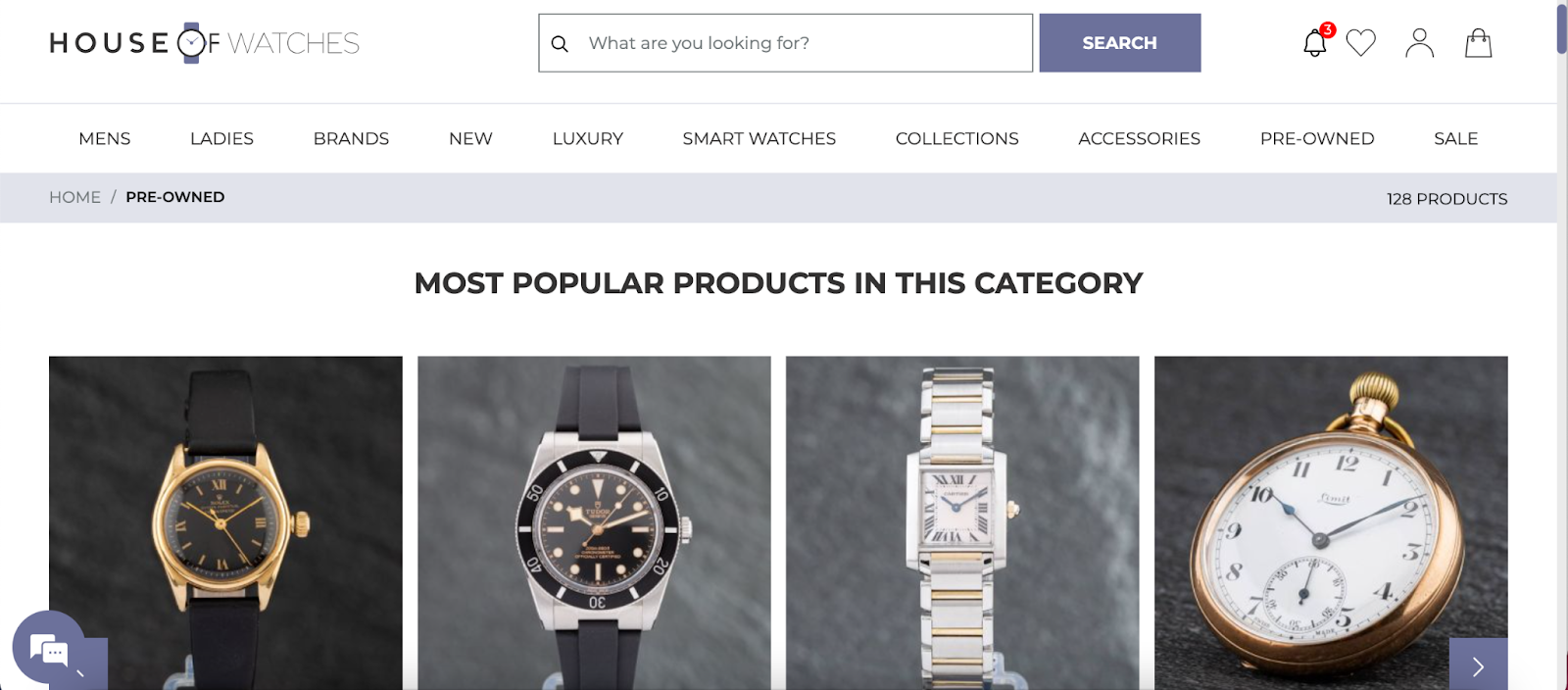
Now that you’ve got everything set up legally, it’s time to create your website. Even if you plan to sell in real-life or online marketplaces, it’s important to have a website to build credibility. Potential buyers are much more likely to trust an online presence rather than one that operates entirely on social media or marketplaces.
To get started, choose a platform to set up your website, like Shopify, for example. Shopify is renowned for its easy setup, secure payment processing, and efficient inventory management. Wix is also ideal for creating visually appealing websites with drag-and-drop features that are incredibly easy to use. Both Shopify and Wix have a number of ‘Luxury Goods’ templates to help you achieve the desired look for your website.
You’ll then need to register a domain name using a service like GoDaddy, Namecheap, or Google Domains. This can then be connected to your chosen platform.
After you’ve completed these steps, you can start uploading images and creating product listings for your items.
You’ll need a payment processor to ensure a smooth checkout process for your customers. Both Shopify and Wix also support multiple payment options, including PayPal, Credit Cards, and Stripe.
The final step is choosing your shipping rates. Companies like USPS, FedEx, and DHL have real-time shipping rate calculations that can help you set prices accordingly.
To incentivize potential buyers, consider offering free shipping after they’ve spent a certain amount of money on your website.
11. Promote your business
After you’re done setting up your website, it’s time to start promoting your products. There are a few key ways to do this, but a combination of a few methods works best.
Social media marketing
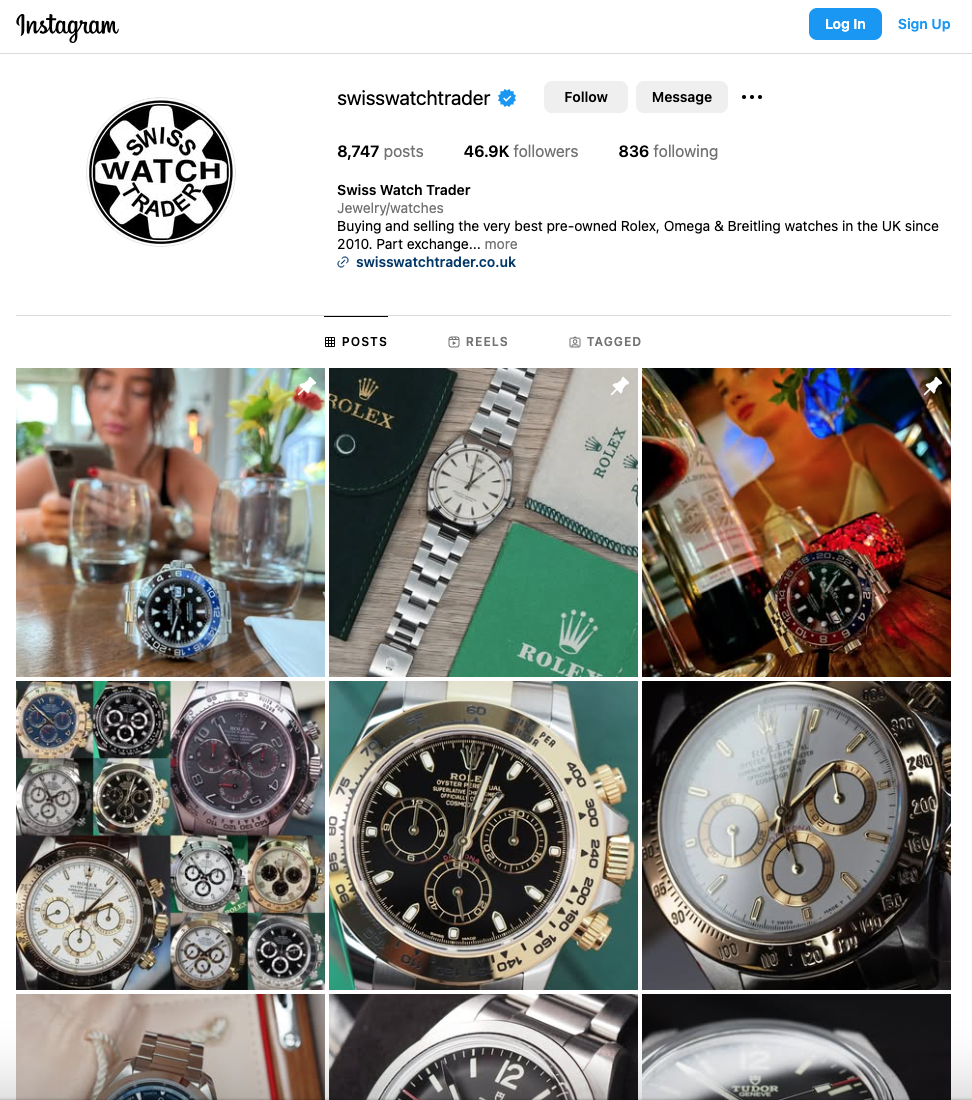
Social media is king when it comes to marketing your products. Instagram is particularly good for this purpose, as it’s a visually driven platform that allows you to upload images and reels showcasing your watches.
Make sure to post high-quality images of your products with engaging captions to draw people in. Include relevant hashtags to make your page more discoverable, for example, #watchfam, #wristwatch, #luxurywatches, #watchflipping.
Facebook is another online space that allows you to create a dedicated business page. You can also join groups and communities related to watch flipping (e.g., ‘Luxury Watches Marketplace’ or ‘Watch Collectors’) to build relationships in the industry and share your listings.
TikTok is another visually driven platform that allows you to post short videos of your inventory. You can make these videos more engaging for viewers by showing behind-the-scenes content or new product arrivals. If you’re skilled at restoration, giving a peek of this process is another fun idea.
Finally, Pinterest is another social media platform that allows you to create boards showcasing your collection. These could be organized according to category, e.g ‘luxury Watches,’ ‘Vintage Watches,’ ‘Rolex Flippers.’
Read these guides for more info:
- Instagram vs Facebook marketing: Which is better for your business?
- How to use Instagram: The ultimate guide for creators
- How to market yourself on social media and grow your brand
- How to set up a TikTok shop
Create a blog
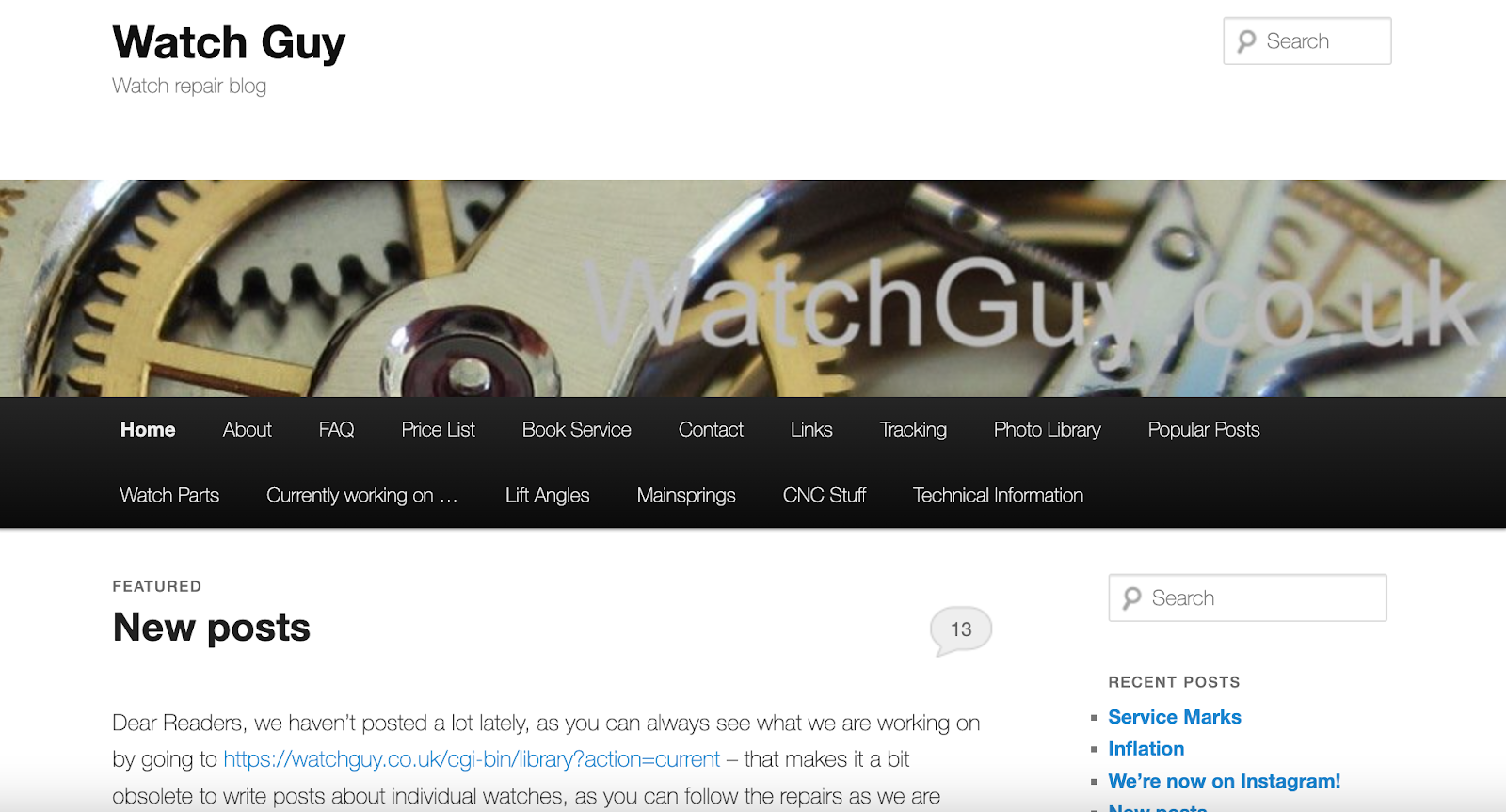
Creating a blog related to luxury watches is another way to promote your inventory. This can be connected directly to your product website.
Stale product descriptions and generic marketing tactics can leave potential customers feeling lost. But a well-crafted blog post can help you hike up your conversion rate.
Say a prospect searching for watch care tips stumbles upon your blog post titled ‘Watch Maintenance: How Proper Care Increases Your Watch’s Resale Value.’ From this blog post, customers would learn about the importance of cleanliness, practical tips for cleaning different parts of the watch, including using a microfiber cloth, water-resistant cleaning methods, and ensuring the crystal is smudge-free.
Throughout the post, strategically placed affiliate links seamlessly connect these helpful tips to relevant products in your online store. Site visitors can click directly on a link to purchase the perfect watch to suit them.
Discover how a blog can boost your watch-flipping business. Our article, ‘Benefits of Blogging for Business’.
Ads
A tried and tested method for promoting your business, ads are a great way to increase brand awareness, drive sales, and help businesses stand out from competition. There are a few different ways to incorporate ads into your marketing campaign:
- Google ads: Google ads are a great way to target specific keywords and allow you to show up to people searching for those relevant terms. To use Google ads, simply choose some relevant keywords like ‘luxury watches for sale’ and set a budget that matches your goals. You can then monitor your ads performance, optimize it for conversions, and use retargeting to bring back visiting customers who didn’t make a purchase.
- Facebook & Instagram ads: Both Facebook and Instagram are great tools for creating a successful ad campaign. This is because these platforms offer detailed targeting options to reach specific demographics. You can run sponsored posts showcasing your best watches or promotions, or set up targeted campaigns for watch buyers in specific locations.
Learn how contextual advertising can supercharge your watch-flipping business with our guide, ‘Contextual Advertising: Learn about the Future of Marketing’.
Email marketing
It’s really no surprise that 87% of brands view email marketing as critical to their success. You can send automated emails to thousands of customers in one go, customize emails and segment them between audiences.
It’s a great way to build awareness around your brand, and maintain awareness through scheduled reminders. You can create customized email marketing campaigns and newsletters to drive traffic to your website or social media pages. As you gradually attract more clients, you'll expand your email list, building a growing base of loyal customers.
12. Find your buyers
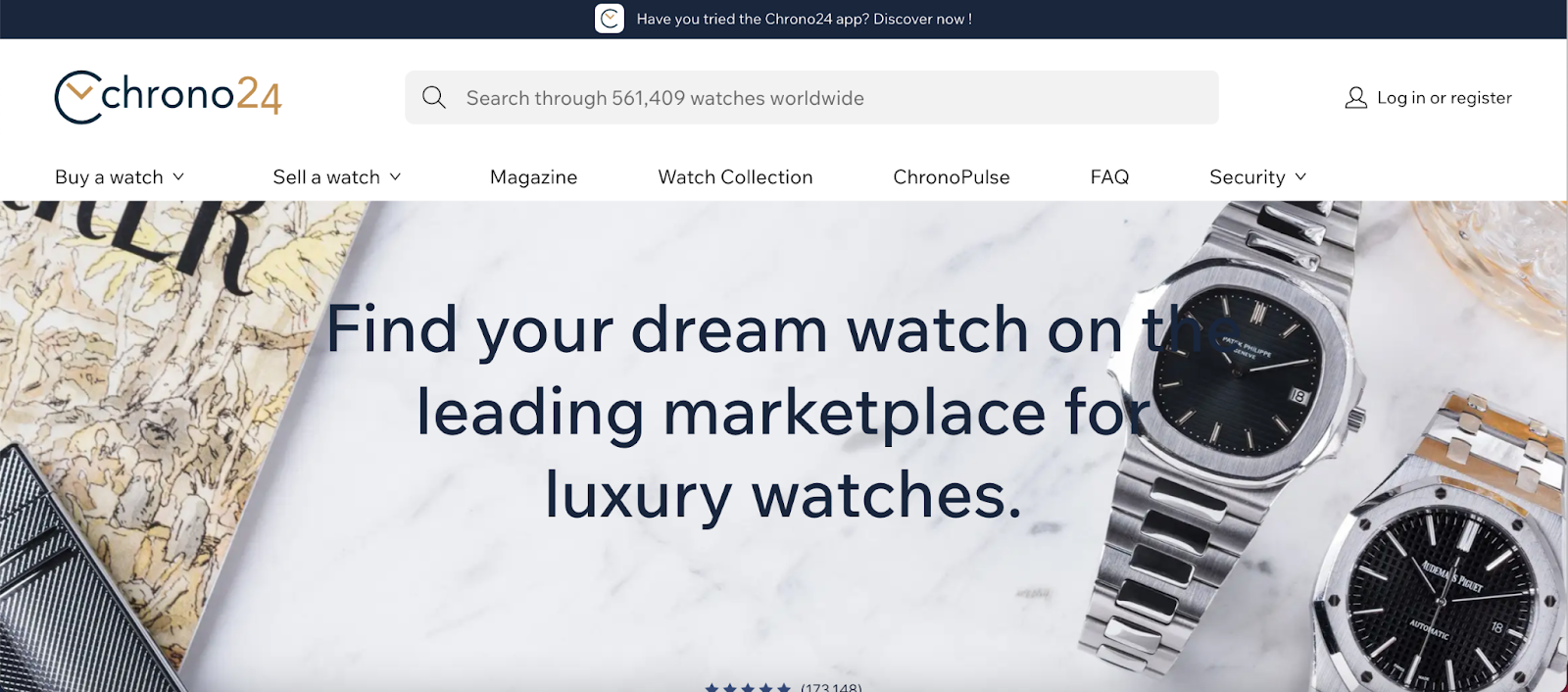
Next up, you need to find buyers for your products. This all comes down to where you decide to sell your products, apart from your own website. There are a few different places to choose from, with some of the most lucrative being:
- Online marketplaces: Platforms like eBay, Chrono24, WatchBox, and some specialized Facebook groups where watch collectors meet. All of these sites have massive audiences who are specifically looking for watches, giving your business great visibility.
- Auctions: Selling watches at auctions are a fantastic way to get the best price, especially if you're dealing with rare or high-value watches. Sotheby’s, Christie’s, and Phillips are examples of dedicated auction houses that specialize in watch auctioning. One of the key benefits of selling at auctions is the competitive environment it fosters, often driving people to bid higher than they initially anticipated.
- Watch shows: If possible in your area, attending watch shows like Baselworld or SIHH (Salon International de la Haute Horlogerie) can be a great opportunity to connect with industry experts. These events bring in thousands of people, often keen to buy watches directly or via consignment.
- Consignment sale: You might also consider running a consignment sale at a local jewelry store in your area. This involves providing watches to a jewelry store who will sell on your behalf while they take a commission once it sells. This is a great opportunity to reach buyers who are already interested in high-end pieces.
- Social media: As well as being great places to advertise your items, you can use social media to drive traffic directly to your website. Engage with followers to foster a sense of community around your brand, and use targeted ads to reach potential buyers who are passionate about watches.
13. After-sale care
The work doesn’t end once you’ve made a sale. You need to provide appropriate after-sales service to customers and be open to returns, especially as you’re dealing with luxury goods.
To handle things as professionally as possible, make sure to be responsive and transparent, and offer a straightforward refund policy. You can also offer insured and tracked shipping for out-of-state and out-of-country purchases to make sure items arrive safely to customers. Great after-sales support can really boost repeat customers and get you referrals. It might just be what sets you apart in the watch industry.
Bear in mind that managing sales can be challenging at times, especially where returns are concerned. Some buyers may return watches in poor condition or simply because they changed their minds. Traders need to strike a good balance between being honest and providing excellent customer service. In this industry, your reputation is everything.
How to spot fake watches
Now that we’ve provided you with a complete guide to get you started on your journey to watch flipping stardom, let’s take a closer look at how to spot fakes (a top skill you’ll need when entering the watch market).
Logo and branding: Make sure to always check the logo, brand name, and any engravings. Authentic watches will have sharp, clear, and meticulous linings. Fake ones will display poor-quality print and engraving.
Movement: Pay close attention to the movement. Real designer watches have smooth, sweeping movements on the second hand. For example, a genuine Rolex has a second hand that moves at 8 ticks per second, while a replica will only move one tick per second.
Weight and feel: You’ll normally be able to spot a fake watch simply by holding it in your hand and feeling the weight of the item. Fake watches will naturally feel lighter because they’re made of cheap materials. Authentic watches, on the other hand, will feel much heavier.
Serial numbers: Genuine watches display unique and well-engraved serial numbers. Rolex, for example, has serial numbers engraved between the lugs at the 6 o'clock position.
Materials: To spot fake watches, you’ll need to take a closer look at the materials. Genuine watches will use high-end materials, including sapphire crystal for the watch face, stainless steel for the case, and real leather for the strap. You’ll find lower-grade materials on fake watches.
Price: Finally, if the price appears to be inordinately cheap, then you might be dealing with a fake. Authentic watches will always be more expensive because of the quality of the craftsmanship and the material used to make them. This is why it’s so important to be careful of watches sold at much lower prices.
Find reselling advice and education on Whop
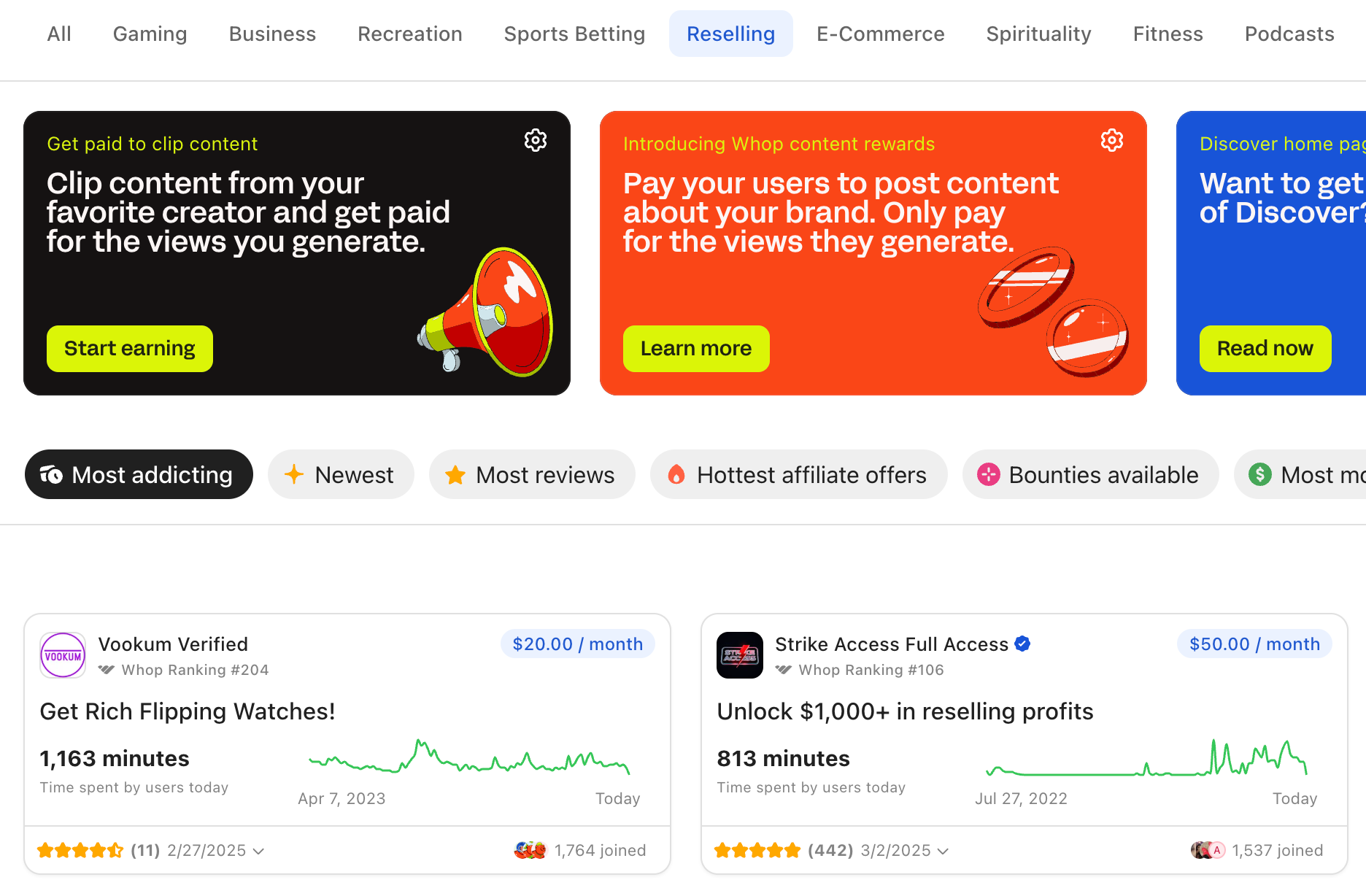
Now that you’ve got this comprehensive how-to-guide in your hands that shows you how to succeed in the watch-flipping game, you're already way ahead compared to those who don’t know where to start in the vast world of reselling.
If you feel ready to take the next step and start your flipping hustle today, join a community that will help you reach your goals faster.
Whop is home to a huge range of dedicated flipping advice from expert-led communities. These dedicated groups will help steer you clear of common mistakes or wasted time, as well as provide additional benefits from unique tools and software that will give you an even greater edge against competition.
Check out the latest groups right here and start your watch-flipping journey today!
FAQ
Which watches are best for flipping?
There are a range of high-end brands out there that are prime opportunities for reselling. Rolex, Patek Phillipe, OMEGA, and Cartier are all brands that have been around for decades, and will be around for many more. They all appreciate in value over time, especially rare or limited-edition models.
What is a good way to diversify and increase my watch flipping income?
When entering the watch flipping game, it’s a good idea to diversify your income stream by listing on different platforms, so that you can gain maximum exposure for your items. As well as this, using different platforms will allow you to find the best place to sell items in your niche, fetching the highest prices possible.


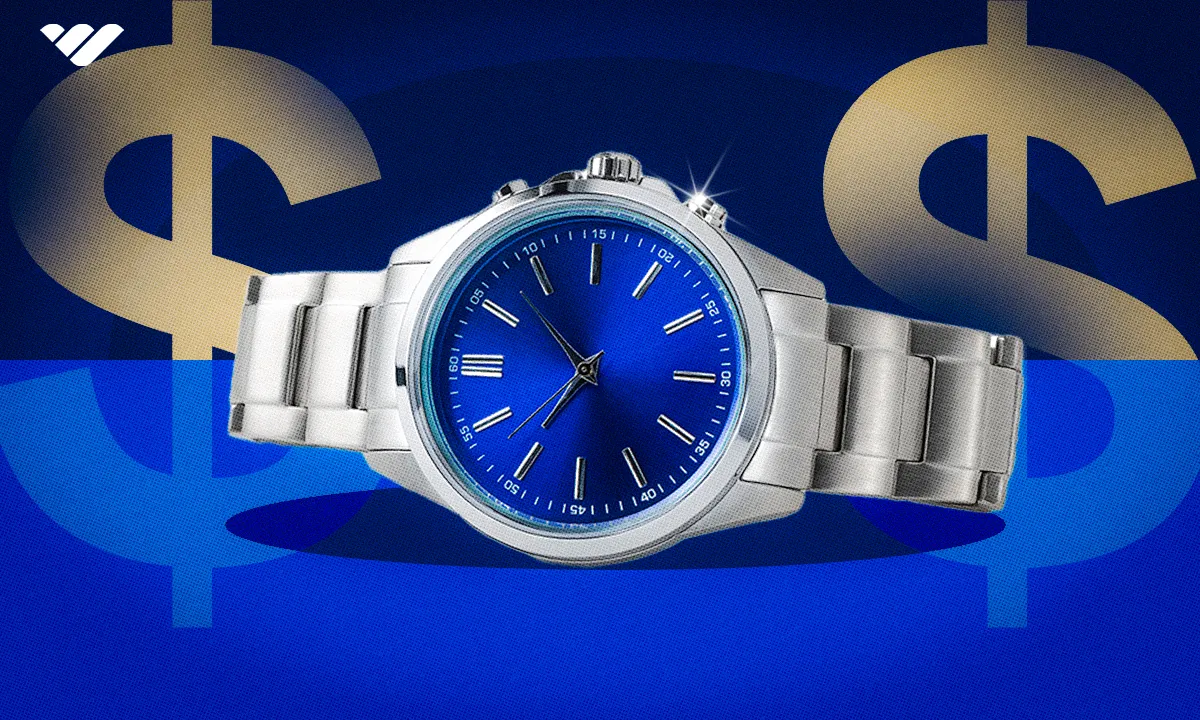
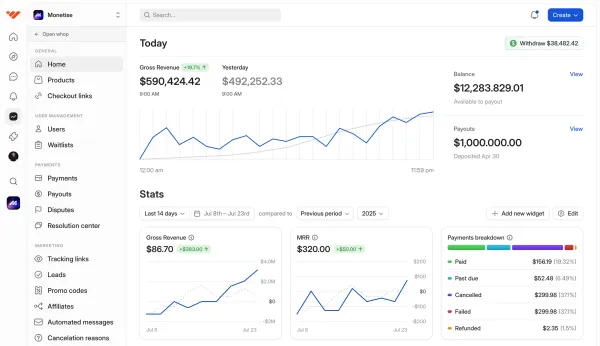


![Top 38 best reselling Discord servers [December 2025]](/blog/content/images/size/w1000/2023/09/reselling-discords.webp)
![Top 29 best sneaker reselling Discord servers [December 2025]](/blog/content/images/size/w1000/2024/01/sneaker-reselling-discord.webp)
![Top 20 best ticket reselling Discord servers [December 2025]](/blog/content/images/size/w1000/2023/12/Top-Ticket-Reselling-Discord-Servers--1-.webp)

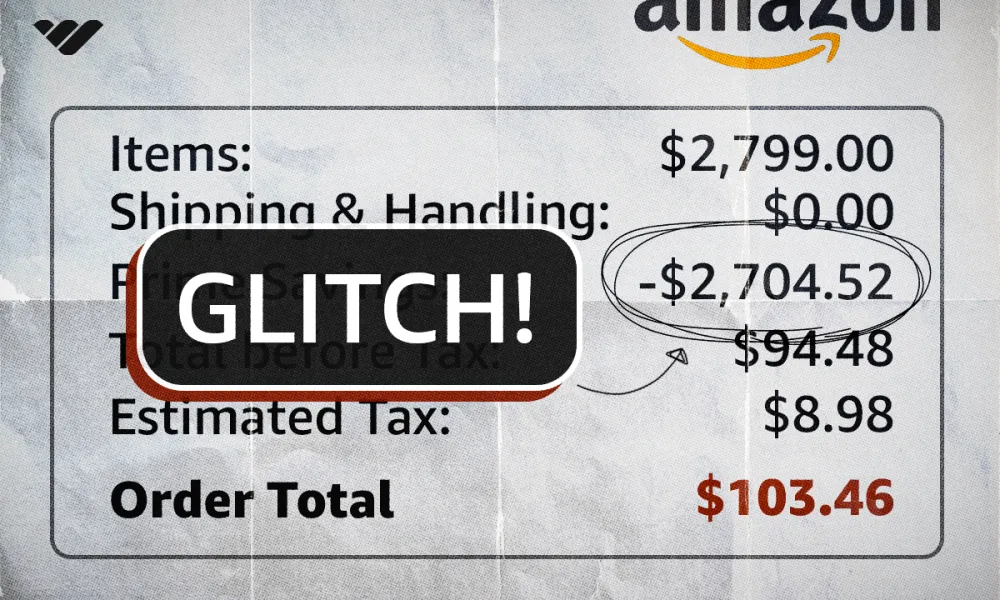
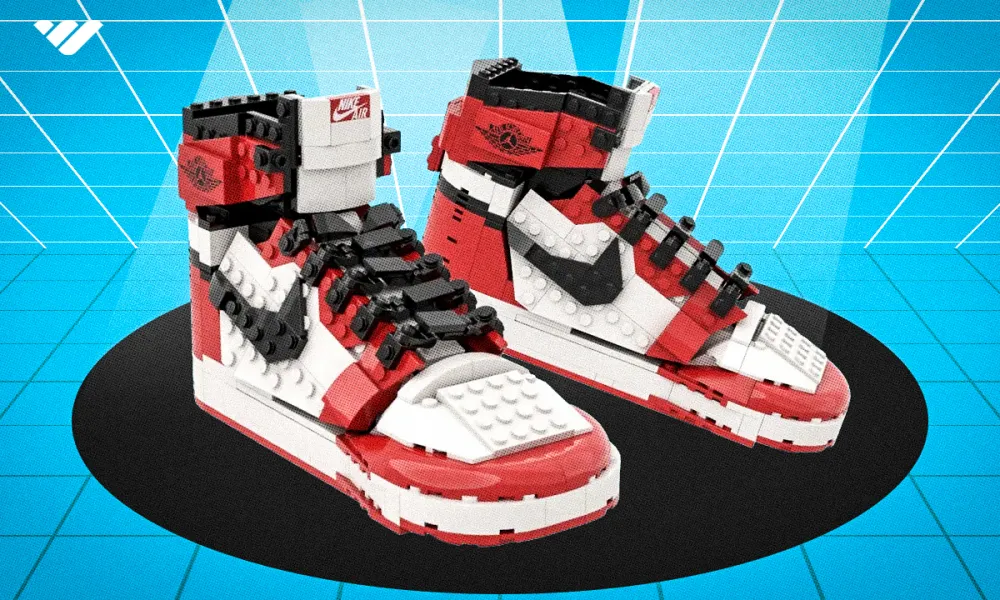
![How to sell on Mercari: Make money reselling your stuff [2026]](/blog/content/images/size/w1000/2025/01/how-to-sell-on-mercari-copy.webp)

![15 best reselling whops [2026]](/blog/content/images/size/w1000/2024/12/Top-Reselling-Whops.webp)
